

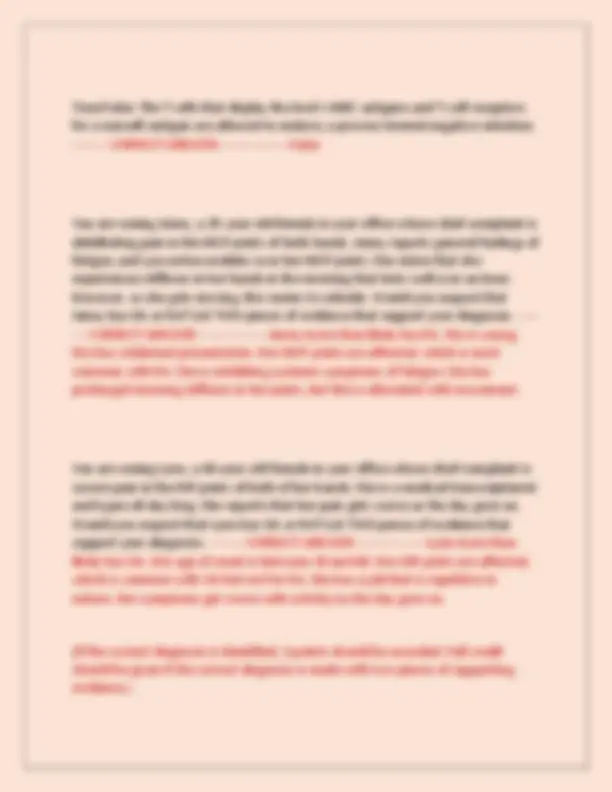
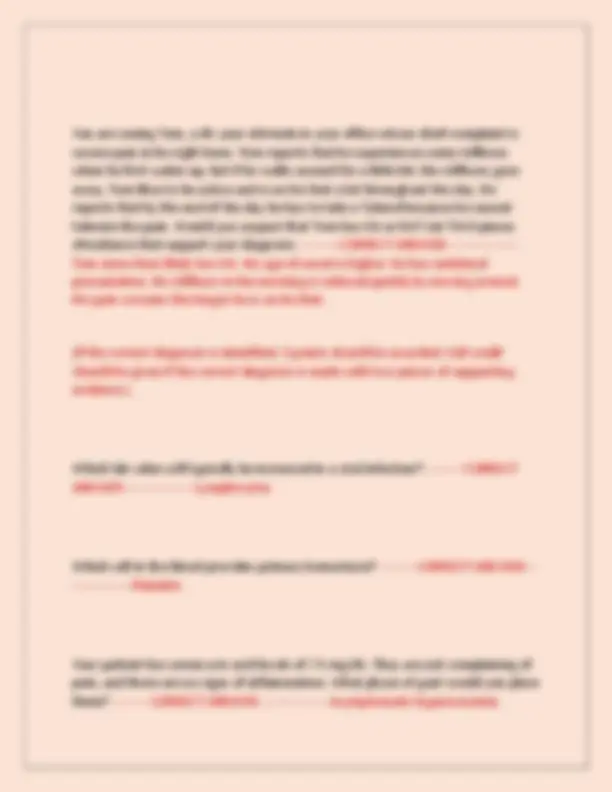
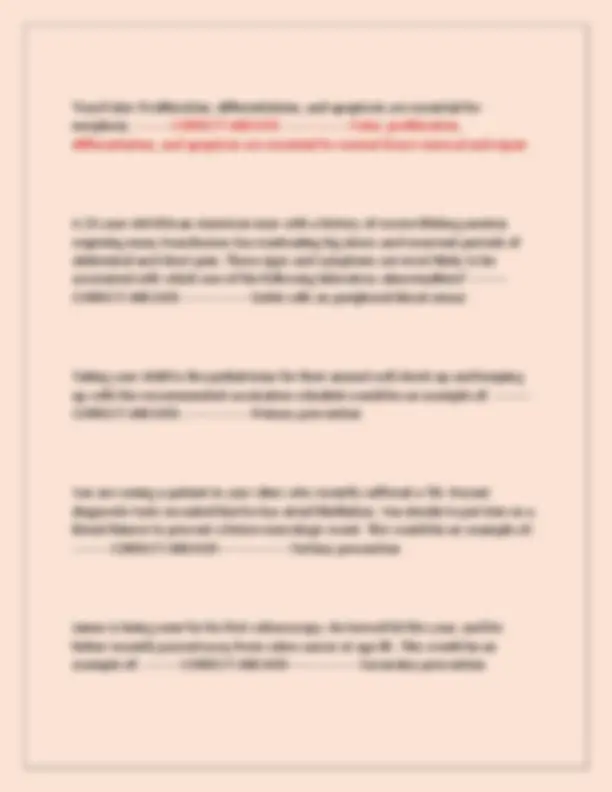
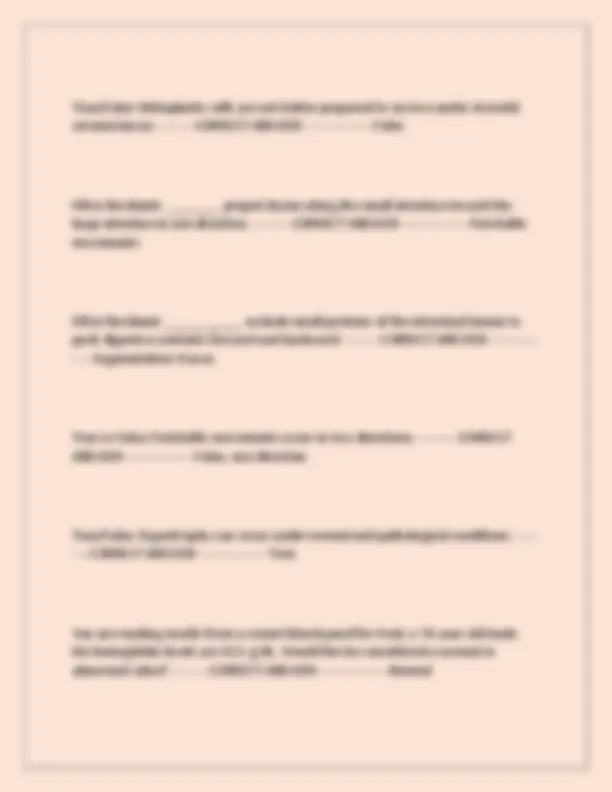
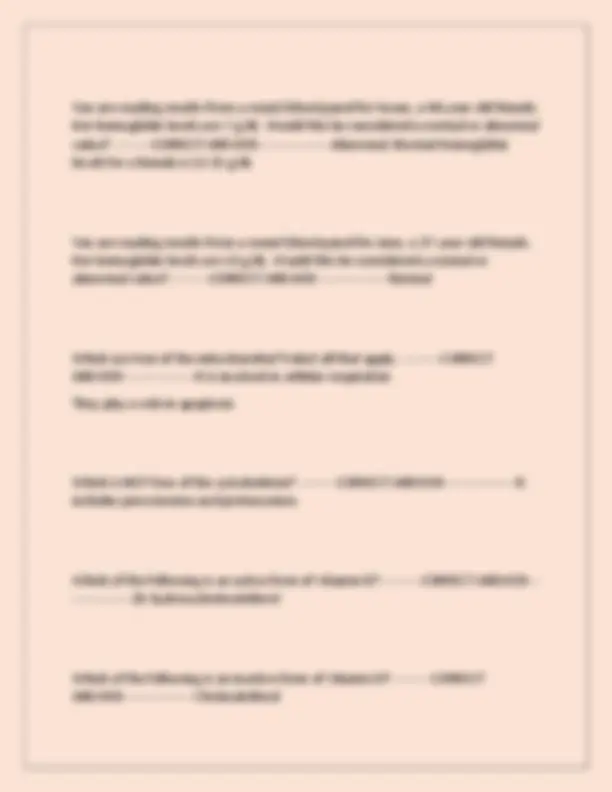
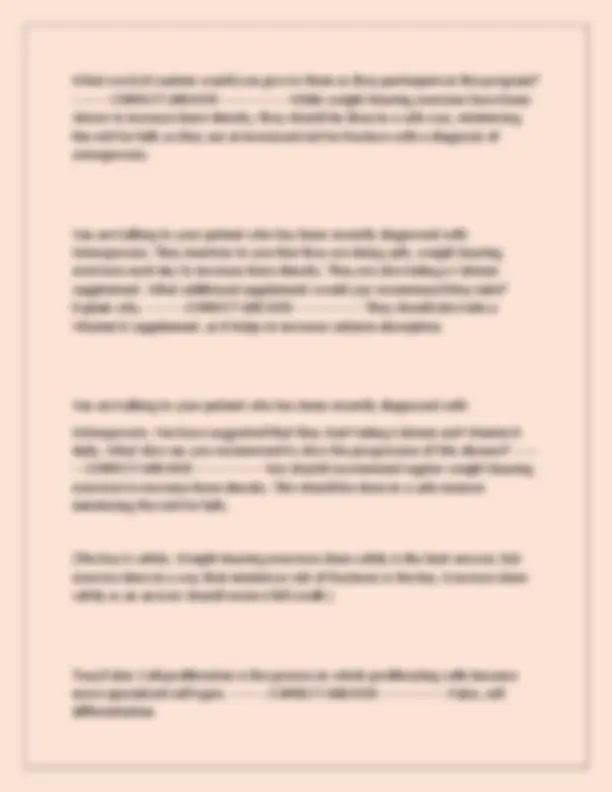
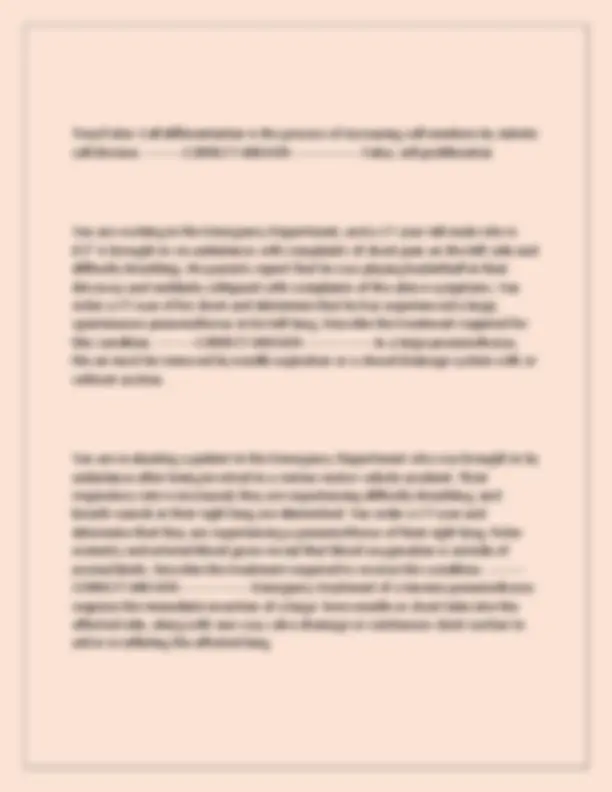
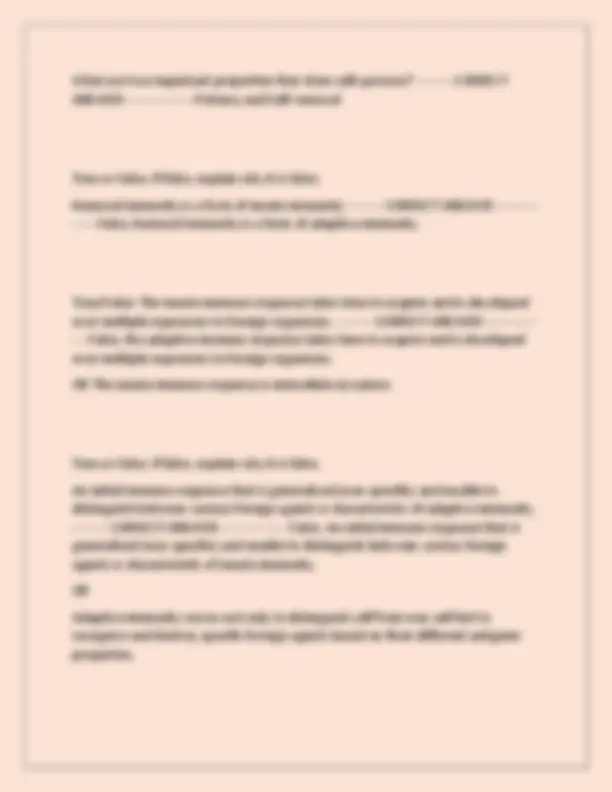
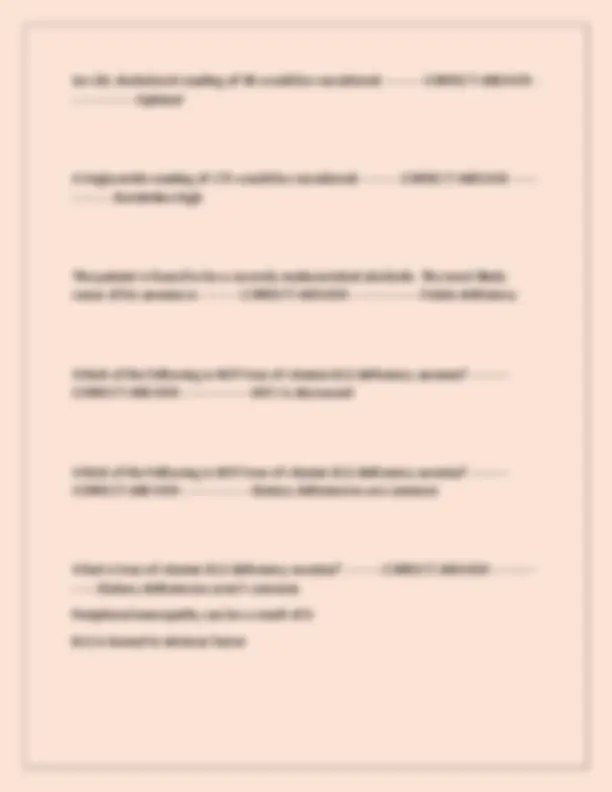
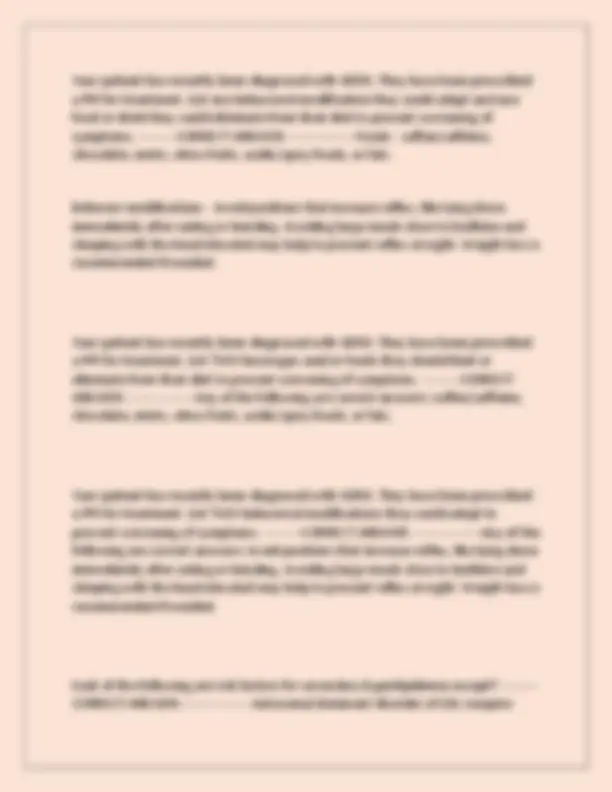
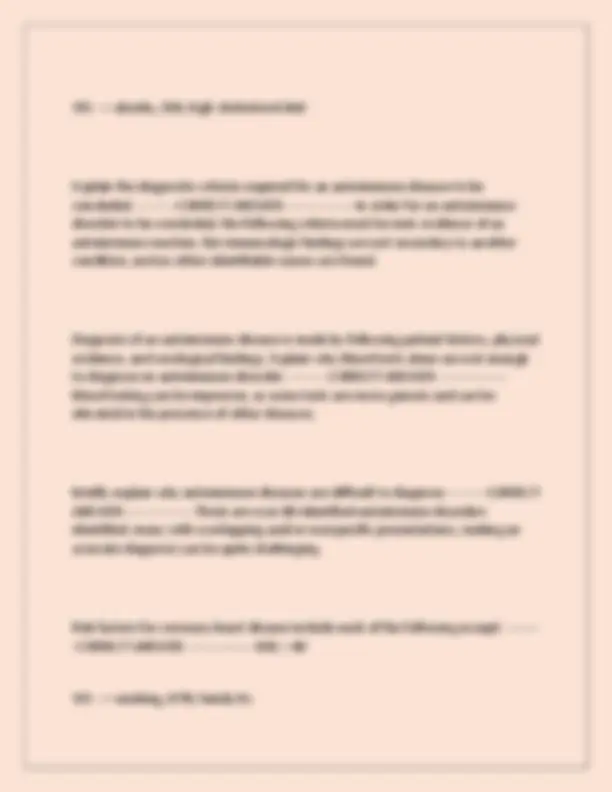
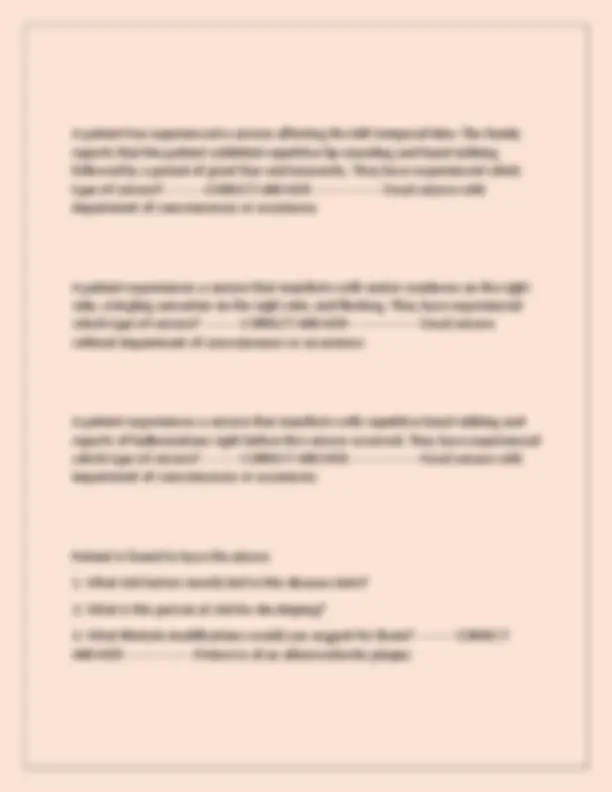
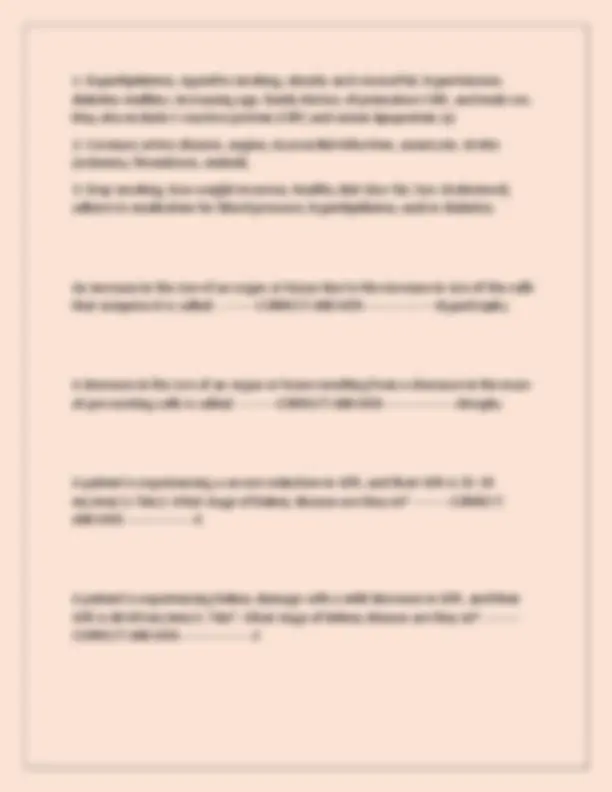
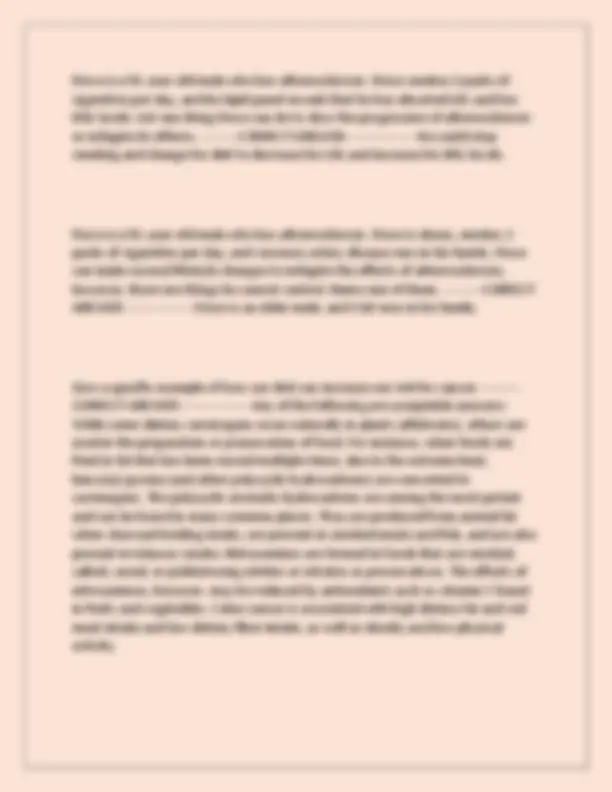
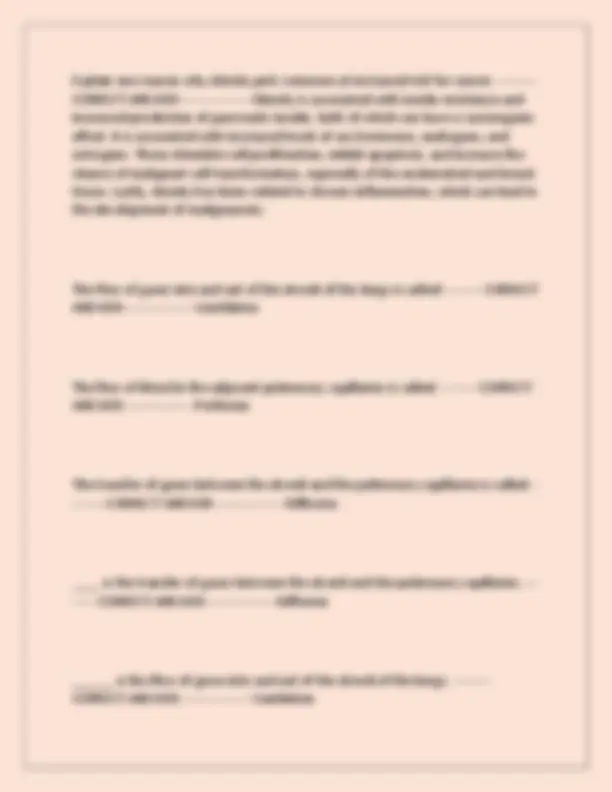
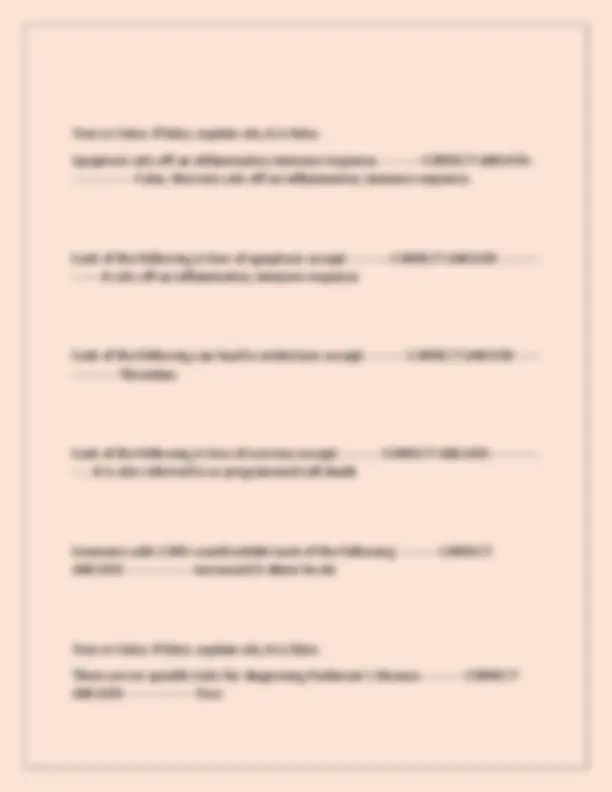
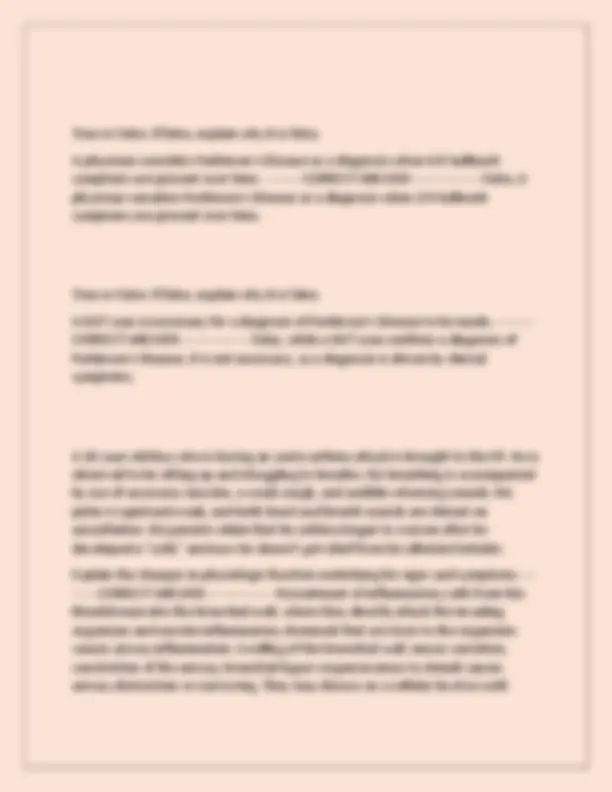
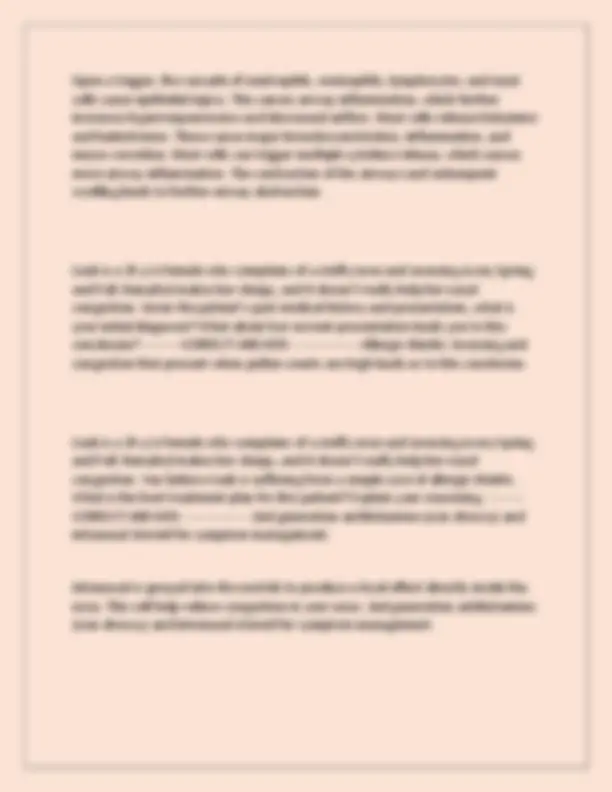
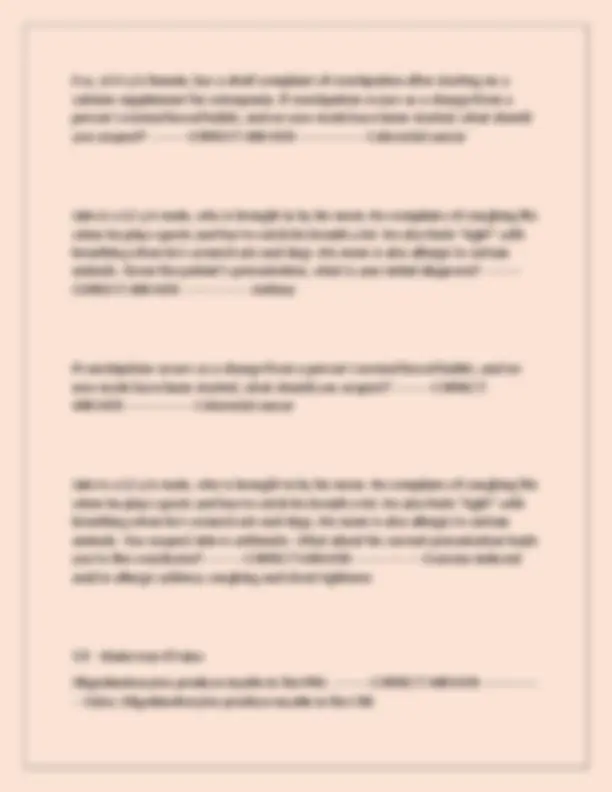
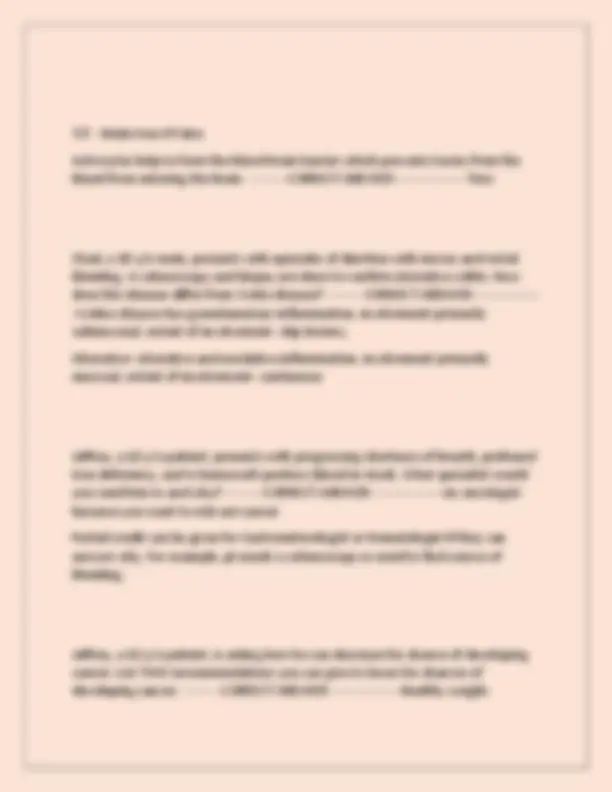
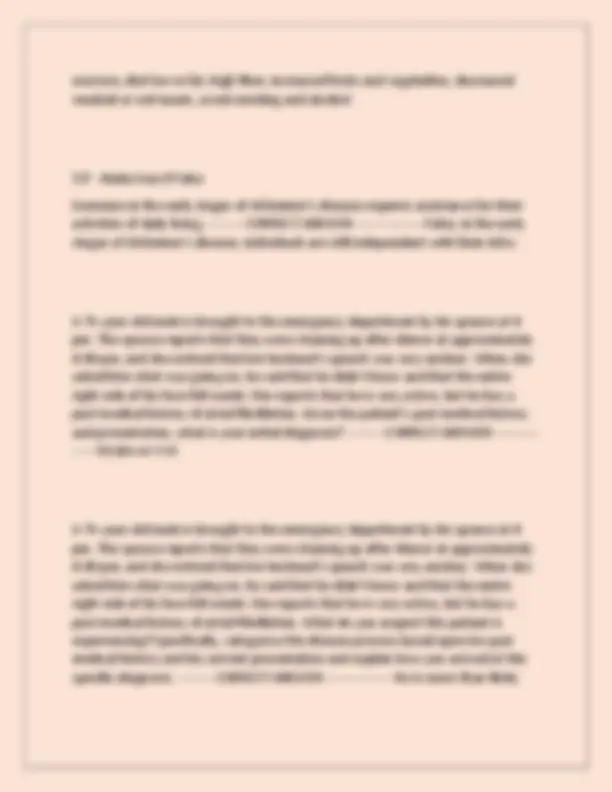
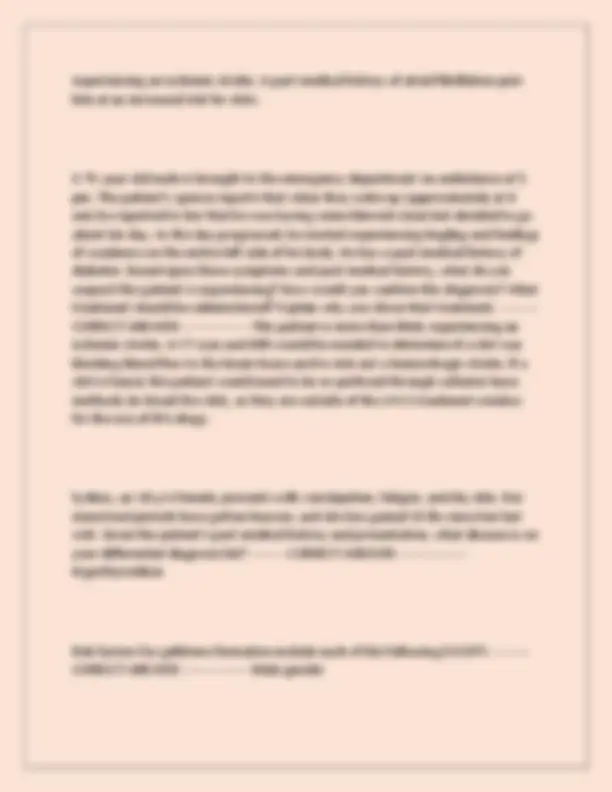
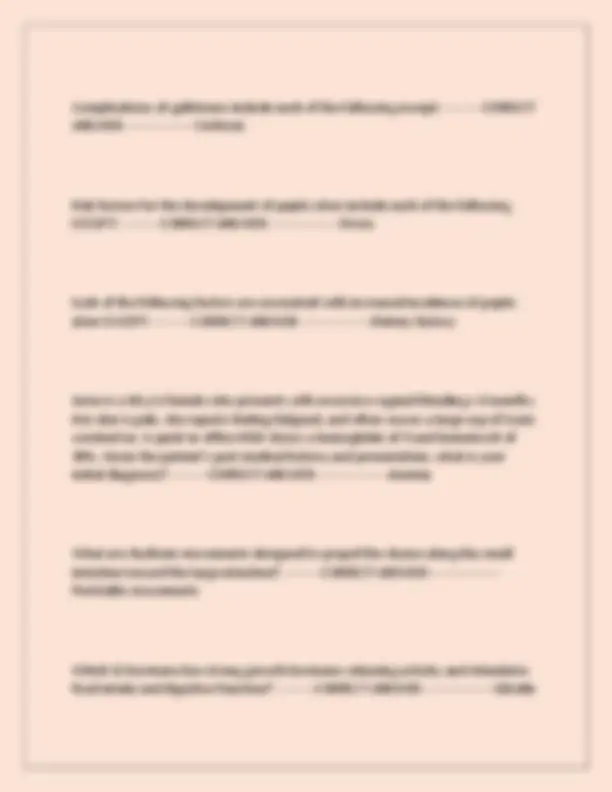
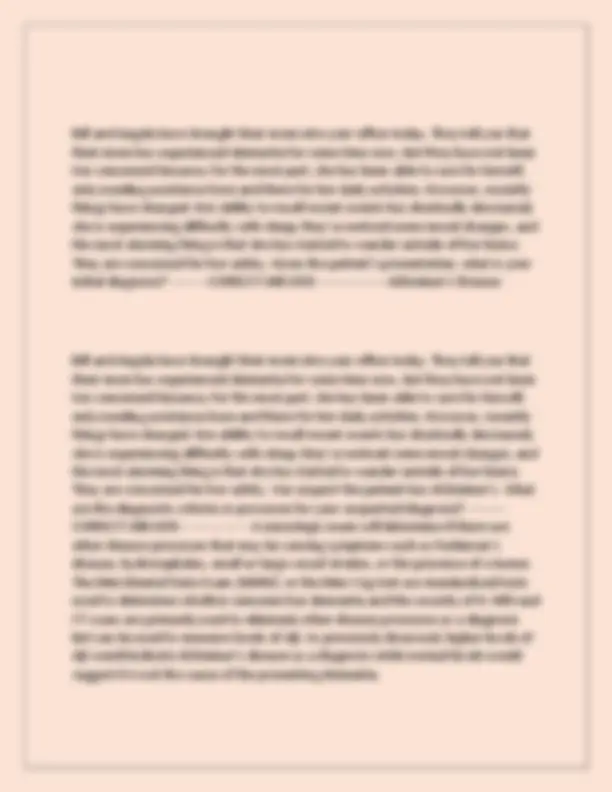
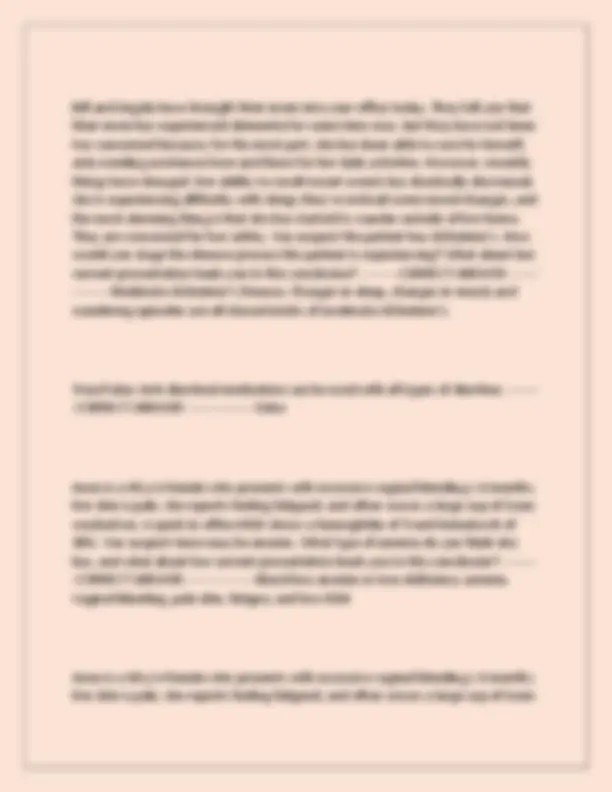
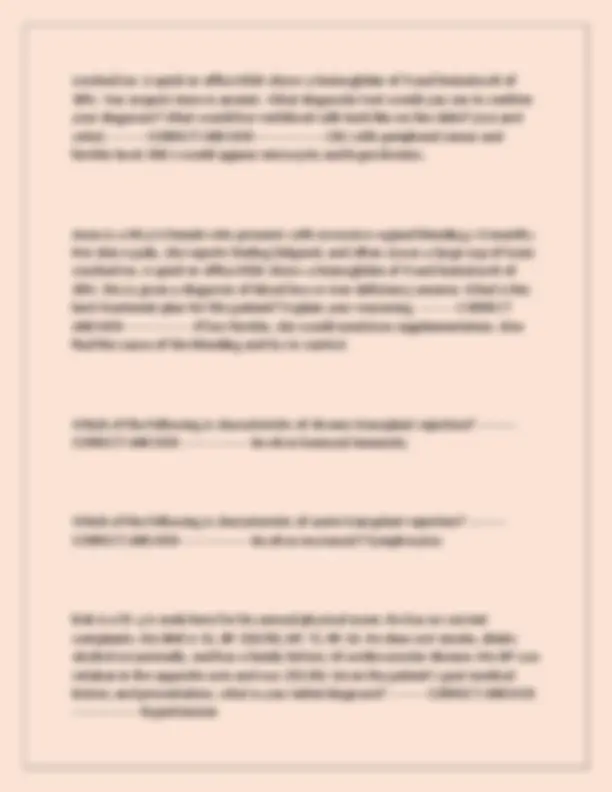
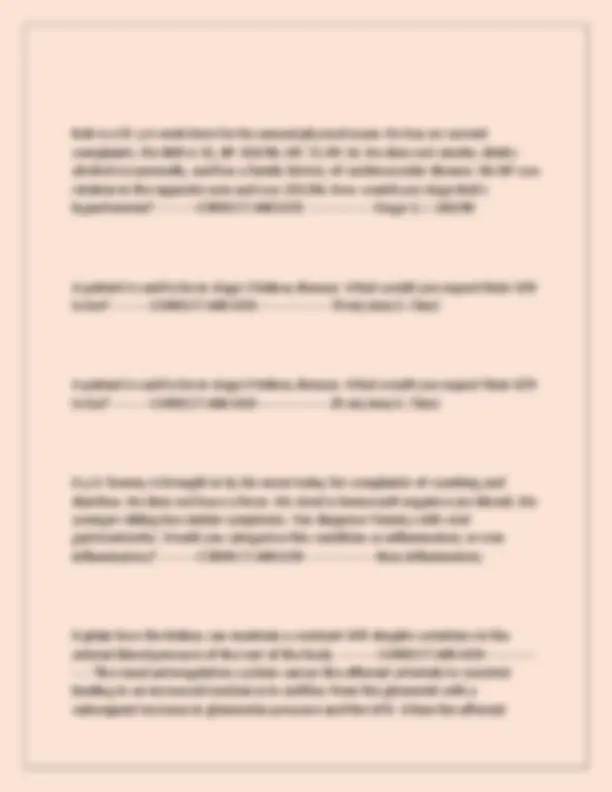
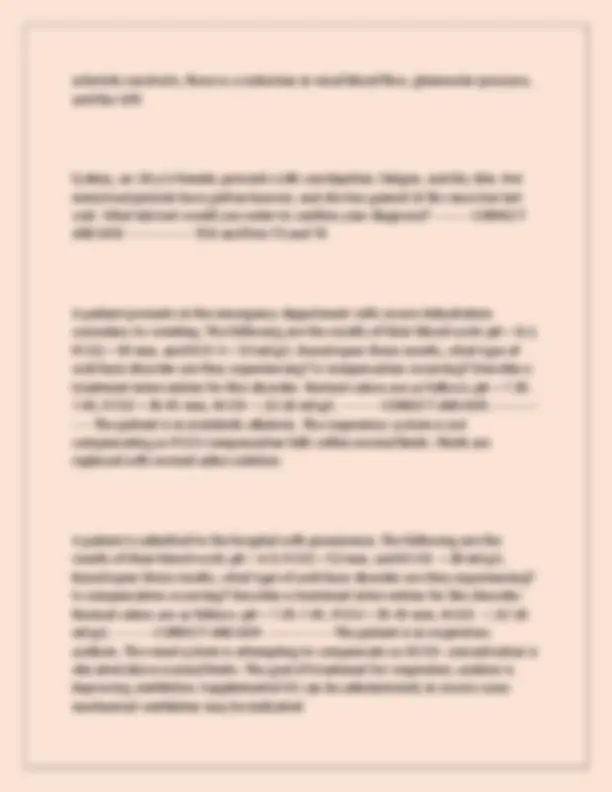
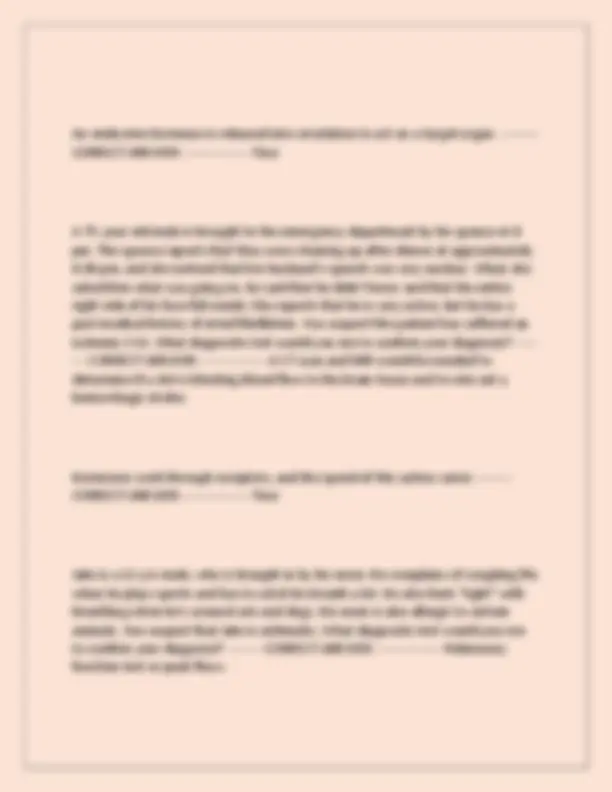
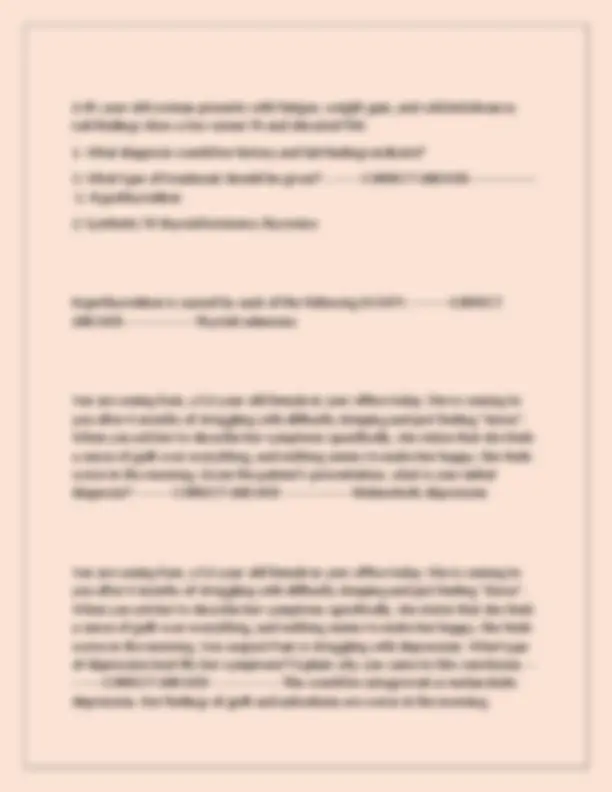
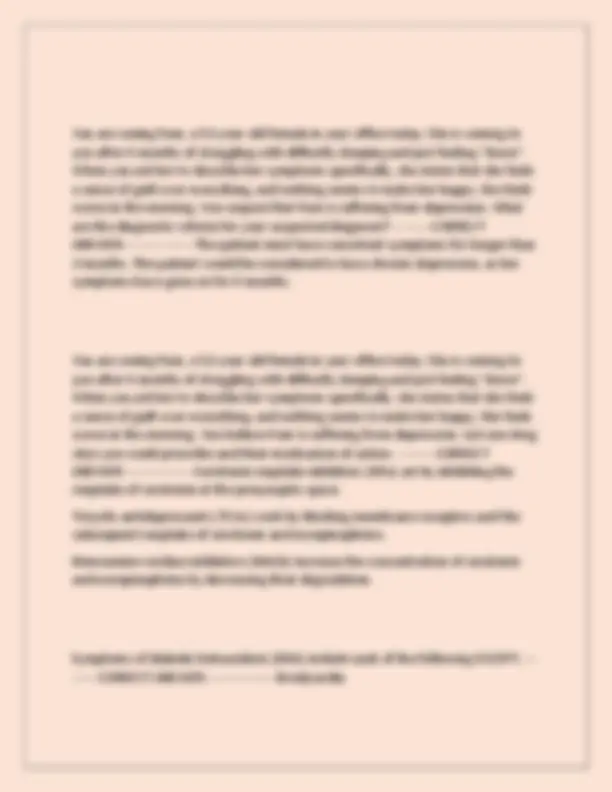
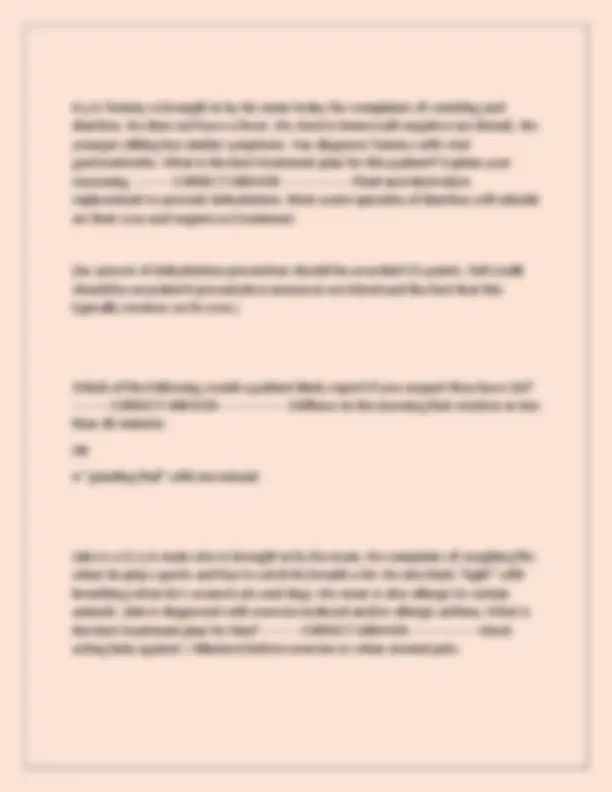
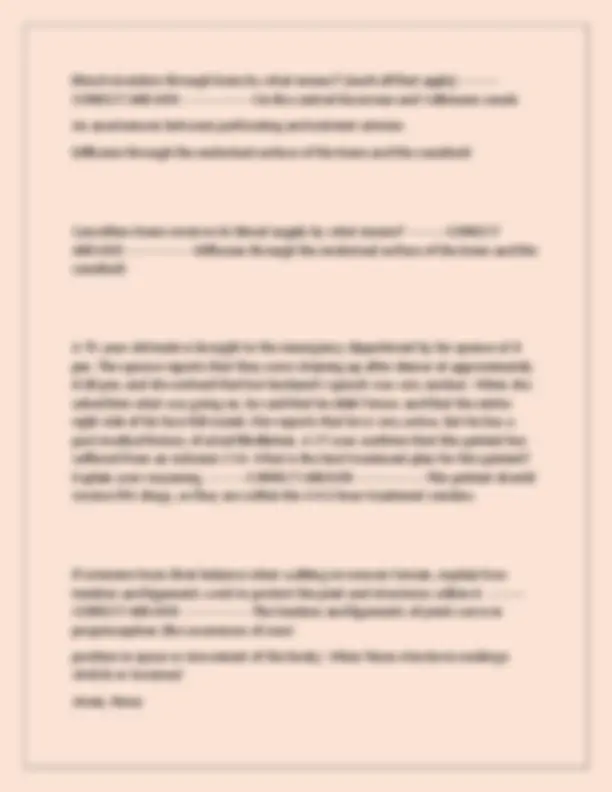
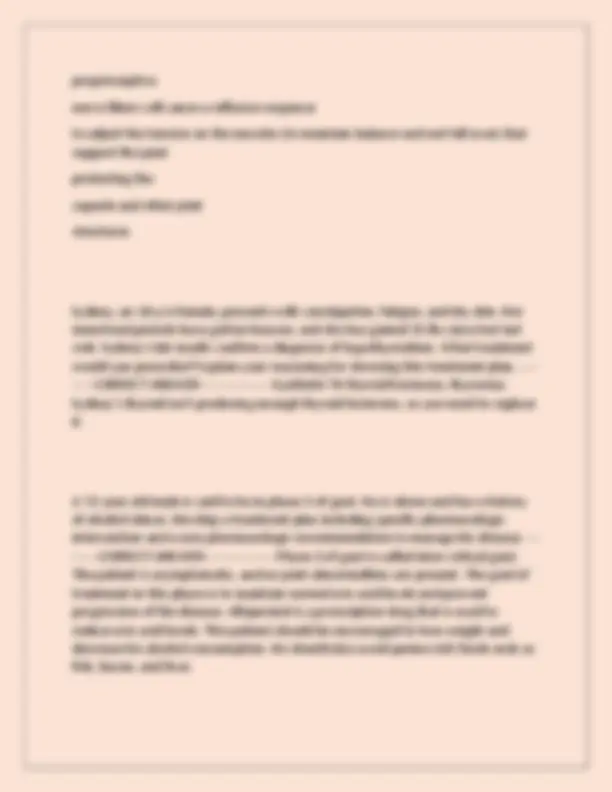
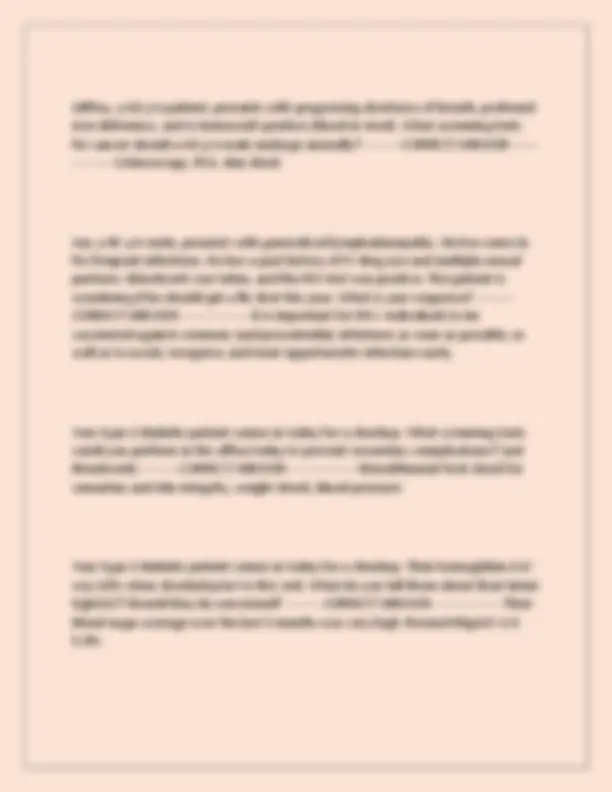


Study with the several resources on Docsity

Earn points by helping other students or get them with a premium plan


Prepare for your exams
Study with the several resources on Docsity

Earn points to download
Earn points by helping other students or get them with a premium plan
Community
Ask the community for help and clear up your study doubts
Discover the best universities in your country according to Docsity users
Free resources
Download our free guides on studying techniques, anxiety management strategies, and thesis advice from Docsity tutors
The BIOD 331 Pathophysiology Final Exam 2025 PDF provides a comprehensive set of questions and verified answers aimed at helping students prepare effectively for their pathophysiology final exam. This document is an essential resource for students looking to deepen their understanding of pathophysiological processes and clinical scenarios. The PDF covers a wide range of topics, including the diagnosis and management of kidney stones, with a focus on recognizing symptoms, understanding urinalysis results, and identifying the appropriate diagnostic tests, such as CT scans. It also delves into the types of kidney stones and their physiological implications, providing insights into magnesium ammonium phosphate stones, commonly associated with specific urine pH levels and UTI history.
Typology: Exams
1 / 44

This page cannot be seen from the preview
Don't miss anything!





































A patient presents to the emergency department with complaints of sharp pain that comes in waves in the upper lateral quadrant of the abdomen. Their skin is clammy, and they have been experiencing nausea and vomiting all day long. They have a history of UTIs. Urinalysis reveals that the pH of their urine is 7.8. Given the patient's past medical history and presentation, what is your initial diagnosis? ---------CORRECT ANSWER-----------------Kidney stones or renal calculi A patient presents to the emergency department with complaints of sharp pain that comes in waves in the upper lateral quadrant of the abdomen. Their skin is clammy, and they have been experiencing nausea and vomiting all day long. They have a history of UTIs. Urinalysis reveals that the pH of their urine is 7.8. You suspect that the patient may have a kidney stone. What diagnostic test would you run to confirm your diagnosis? ---------CORRECT ANSWER-----------------In addition to the urinalysis already run, a CT scan would be needed to confirm your diagnosis and determine the size of the stone. A patient presents to the emergency department with complaints of sharp pain that comes in waves in the upper lateral quadrant of the abdomen. Their skin is clammy, and they have been experiencing nausea and vomiting all day long. They have a history of UTIs. Urinalysis reveals that the pH of their urine is 7.8. A CT scan reveals that they have a kidney stone. What type of kidney stone would suspect they have? What about their current presentation leads you to this conclusion? --- ------CORRECT ANSWER-----------------The patient has a magnesium ammonium
phosphate stone given the elevated pH of their urine. These types of stones are the result of a UTI caused by bacteria that contain urease. A patient presents to the emergency department with complaints of sharp pain that comes in waves in the upper lateral quadrant of the abdomen. Their skin is clammy, and they have been experiencing nausea and vomiting all day long. They have a history of UTIS. Urinalysis reveals that the pH of their urine is 7.8. A CT scan reveals a renal calculi that is 7 mm in diameter. What is the best treatment plan for this patient? Explain your reasoning for this treatment plan. --------- CORRECT ANSWER-----------------It must be removed through ureteroscopic removal or extracorporeal shockwave lithotripsy, as it is greater than 5 mm in diameter. The patient should be placed on antibiotics to treat the UTI, as well as medication for pain management. Explain how the skin's physical barrier makes it inhospitable to microorganisms --- ------CORRECT ANSWER-----------------Our skin is comprised of closely packed cells in multiple layers. Keratin is what covers the skin and makes it a salty acidic inhospitable environment to microbes with the use of proteins and lysozymes. Explain the challenges of diagnosing autoimmune disorders ---------CORRECT ANSWER-----------------There are over 80 identified, many with overlapping presentations. Many manifestations are nonspecific and are seen in other non- autoimmune diseases. Blood testing isn't perfect either, as some tests are more generic and can be elevated in the presence of other diseases.
True/False: The T cells that display the host's MHC antigens and T-cell receptors for a nonself-antigen are allowed to mature, a process termed negative selection. ---------CORRECT ANSWER-----------------False You are seeing Jenny, a 25-year-old female in your office whose chief complaint is debilitating pain in the MCP joints of both hands. Jenny reports general feelings of fatigue, and you notice nodules over her MCP joints. She states that she experiences stiffness in her hands in the morning that lasts well over an hour. However, as she gets moving, this seems to subside. Would you suspect that Jenny has OA or RA? List TWO pieces of evidence that support your diagnosis. ----- ----CORRECT ANSWER-----------------Jenny more than likely has RA. She is young. She has a bilateral presentation. Her MCP joints are affected, which is most common with RA. She is exhibiting systemic symptoms of fatigue. She has prolonged morning stiffness in her joints, but this is alleviated with movement. You are seeing Lynn, a 40 - year-old female in your office whose chief complaint is severe pain in the DIP joints of both of her hands. She is a medical transcriptionist and types all day long. She reports that her pain gets worse as the day goes on. Would you suspect that Lynn has OA or RA? List TWO pieces of evidence that support your diagnosis. ---------CORRECT ANSWER-----------------Lynn more than likely has OA. Her age of onset is between 30 and 60. Her DIP joints are affected, which is common with OA but not for RA. She has a job that is repetitive in nature. Her symptoms get worse with activity/as the day goes on. (If the correct diagnosis is identified, 3 points should be awarded. Full credit should be given if the correct diagnosis is made with two pieces of supporting evidence.)
You are seeing Tom, a 65-year-old male in your office whose chief complaint is severe pain in his right knee. Tom reports that he experiences some stiffness when he first wakes up, but if he walks around for a little bit, the stiffness goes away. Tom likes to be active and is on his feet a lot throughout the day. He reports that by the end of the day he has to take a Tylenol because he cannot tolerate the pain. Would you suspect that Tom has OA or RA? List TWO pieces ofevidence that support your diagnosis. ---------CORRECT ANSWER----------------- Tom more than likely has OA. His age of onset is higher. He has unilateral presentation. His stiffness in the morning is relieved quickly by moving around. His pain worsens the longer he is on his feet. (If the correct diagnosis is identified, 3 points should be awarded. Full credit should be given if the correct diagnosis is made with two pieces of supporting evidence.) Which lab value will typically be increased in a viral infection? ---------CORRECT ANSWER-----------------Lymphocytes Which cell in the blood provides primary hemostasis? ---------CORRECT ANSWER--- --------------Platelets Your patient has serum uric acid levels of 7.5 mg/dL. They are not complaining of pain, and there are no signs of inflammation. What phase of gout would you place them? ---------CORRECT ANSWER-----------------Asymptomatic hyperuricemia
(3) Epinephrine (4) Identification about allergy, EpiPen A 12-year-old female presents with itchy eyes, nasal congestion and drainage, and sneezing every spring when the pollen count is high. (1) Explain the immunologic mechanisms that are responsible for her symptoms. (2) What type(s) of treatment might be used to relieve her symptoms? --------- CORRECT ANSWER-----------------(1) Mast cells, basophils, and eosinophils play an important role with type I reactions because they contain histamines. Primary response is vasodilation, vascular leakage, and smooth muscle contraction. Late- phase response is more intense with eosinophils and other acute and chronic inflammatory cells, as well as tissue damage. (2) Antihistamines. Which of the following is/are characteristic of normal tissue function, renewal and repair? Select all that apply. ---------CORRECT ANSWER-----------------Hypertrophy Apoptosis Which of the following is/are characteristic of neoplasia? Select all that apply. ----- ----CORRECT ANSWER-----------------Unregulated growth An abnormal cellular growth, resulting in cells that vary in size, shape, and organization is called: ---------CORRECT ANSWER-----------------Dysplasia
True/False: Proliferation, differentiation, and apoptosis are essential for neoplasia. ---------CORRECT ANSWER-----------------False, proliferation, differentiation, and apoptosis are essential for normal tissue renewal and repair A 23-year-old African-American man with a history of severe lifelong anemia requiring many transfusions has nonhealing leg ulcers and recurrent periods of abdominal and chest pain. These signs and symptoms are most likely to be associated with which one of the following laboratory abnormalities? --------- CORRECT ANSWER-----------------Sickle cells on peripheral blood smear Taking your child to the pediatrician for their annual well check-up and keeping up with the recommended vaccination schedule would be an example of: --------- CORRECT ANSWER-----------------Primary prevention You are seeing a patient in your clinic who recently suffered a TIA. Recent diagnostic tests revealed that he has atrial fibrillation. You decide to put him on a blood thinner to prevent a future neurologic event. This would be an example of: ---------CORRECT ANSWER-----------------Tertiary prevention James is being seen for his first colonoscopy. He turned 50 this year, and his father recently passed away from colon cancer at age 85. This would be an example of: ---------CORRECT ANSWER-----------------Secondary prevention
You are reading results from a recent blood panel for Susan, a 48-year-old female. Her hemoglobin levels are 7 g/dL. Would this be considered a normal or abnormal value? ---------CORRECT ANSWER-----------------Abnormal. Normal Hemoglobin levels for a female is 12-15 g/dL You are reading results from a recent blood panel for Jane, a 37-year-old female. Her hemoglobin levels are 13 g/dL. Would this be considered a normal or abnormal value? ---------CORRECT ANSWER-----------------Normal Which are true of the mitochondria? Select all that apply. ---------CORRECT ANSWER-----------------It is involved in cellular respiration They play a role in apoptosis Which is NOT true of the cytoskeleton? ---------CORRECT ANSWER-----------------It includes peroxisomes and proteasomes Which of the following is an active form of Vitamin D? ---------CORRECT ANSWER--- -------------- 25 - hydroxycholecalciferol Which of the following is an inactive form of Vitamin D? ---------CORRECT ANSWER-----------------Cholecalciferol
Which of the following is synthesized in the kidney and regulates the differentiation of red blood cells within bone marrow? ---------CORRECT ANSWER-- ---------------Erythropoietin Which are true of the cell membrane? Select all that apply. ---------CORRECT ANSWER-----------------Controls the transport of materials from the outside fluids to within Helps with the conduction of electrical currents in nerve and muscle cells Aids in the regulation of cell growth and proliferation True or False. If false, explain why the statement is false. A benign neoplasm invades and destroys tissue and possesses a rapid rate of growth. ---------CORRECT ANSWER-----------------False. A malignant neoplasm invades and destroys tissues and possesses a rapid rate of growth. OR A benign neoplasm resembles the cells of the tissues of origin and possesses a slow rate of growth. True or False. If false, explain why the statement is false. A malignant neoplasm resembles the cells of the tissues of origin and possesses a slow rate of growth. ---------CORRECT ANSWER-----------------False. A benign
What word of caution would you give to them as they participate in this program? ---------CORRECT ANSWER-----------------While weight-bearing exercises have been shown to increase bone density, they should be done in a safe way, minimizing the risk for falls as they are at increased risk for fracture with a diagnosis of osteoporosis. You are talking to your patient who has been recently diagnosed with Osteoporosis. They mention to you that they are doing safe, weight bearing exercises each day to increase bone density. They are also taking a Calcium supplement. What additional supplement would you recommend they take? Explain why. ---------CORRECT ANSWER-----------------They should also take a Vitamin D supplement, as it helps to increase calcium absorption. You are talking to your patient who has been recently diagnosed with Osteoporosis. You have suggested that they start taking Calcium and Vitamin D daily. What else can you recommend to slow the progression of this disease? ------ ---CORRECT ANSWER-----------------You should recommend regular weight-bearing exercises to increase bone density. This should be done in a safe manner minimizing the risk for falls. (The key is safety. Weight-bearing exercises done safely is the best answer, but exercise done in a way that minimizes risk of fractures is the key. Exercises done safely as an answer should receive full credit.) True/False: Cell proliferation is the process in which proliferating cells become more specialized cell types. ---------CORRECT ANSWER-----------------False, cell differentiation
True/False: Cell differentiation is the process of increasing cell numbers by mitotic cell division. ---------CORRECT ANSWER-----------------False, cell proliferation You are working in the Emergency Department, and a 17-year-old male who is 6'2" is brought in via ambulance with complaints of chest pain on the left side and difficulty breathing. His parents report that he was playing basketball in their driveway and suddenly collapsed with complaints of the above symptoms. You order a CT scan of his chest and determine that he has experienced a large, spontaneous pneumothorax in his left lung. Describe the treatment required for this condition. ---------CORRECT ANSWER-----------------In a large pneumothorax, the air must be removed by needle aspiration or a closed drainage system with or without suction. You are evaluating a patient in the Emergency Department who was brought in by ambulance after being involved in a serious motor vehicle accident. Their respiratory rate is increased; they are experiencing difficulty breathing, and breath sounds in their right lung are diminished. You order a CT scan and determine that they are experiencing a pneumothorax of their right lung. Pulse oximetry and arterial blood gases reveal that blood oxygenation is outside of normal limits. Describe the treatment required to reverse this condition. --------- CORRECT ANSWER-----------------Emergency treatment of a tension pneumothorax requires the immediate insertion of a large- bore needle or chest tube into the affected side, along with one-way valve drainage or continuous chest suction to aid in re-inflating the affected lung.
This type of cell remains incompletely differentiated throughout life: --------- CORRECT ANSWER-----------------Stem cell These are cells of the same lineage that have not yet differentiated to the extent that they have lost their ability to divide. ---------CORRECT ANSWER----------------- Progenitor or parent cells Which of the following are most likely to have arisen from an adult stem cell? ----- ----CORRECT ANSWER-----------------Epithelial Each of the following is characteristic of Addison's Disease except? --------- CORRECT ANSWER-----------------Emotional disturbances Signs and symptoms of Addison's disease include each of the following EXCEPT: --- ------CORRECT ANSWER-----------------Hyperglycemia Which of the following would you expect to find if someone has Addison's Disease? Select all that apply. ---------CORRECT ANSWER-----------------Decreased cortisol levels Hyperpigmentation of the skin
Which of the following would you expect to find if someone has Cushing's Disease? Select all that apply. ---------CORRECT ANSWER-----------------Increased cortisol levels Buffalo hump
Your patient has recently been diagnosed with GERD. They have been prescribed a PPI for treatment. List one behavioral modification they could adopt and one food or drink they could eliminate from their diet to prevent worsening of symptoms. ---------CORRECT ANSWER-----------------Foods - coffee/caffeine, chocolate, mints, citrus fruits, acidic/spicy foods, or fats. Behavior modifications - Avoid positions that increase reflux, like lying down immediately after eating or bending. Avoiding large meals close to bedtime and sleeping with the head elevated may help to prevent reflux at night. Weight loss is recommended if needed. Your patient has recently been diagnosed with GERD. They have been prescribed a PPI for treatment. List TWO beverages and/or foods they should limit or eliminate from their diet to prevent worsening of symptoms. ---------CORRECT ANSWER-----------------Any of the following are correct answers: coffee/caffeine, chocolate, mints, citrus fruits, acidic/spicy foods, or fats. Your patient has recently been diagnosed with GERD. They have been prescribed a PPI for treatment. List TWO behavioral modifications they could adopt to prevent worsening of symptoms. ---------CORRECT ANSWER-----------------Any of the following are correct answers: Avoid positions that increase reflux, like lying down immediately after eating or bending. Avoiding large meals close to bedtime and sleeping with the head elevated may help to prevent reflux at night. Weight loss is recommended if needed. Each of the following are risk factors for secondary hyperlipidemia except? --------- CORRECT ANSWER-----------------Autosomal dominant disorder of LDL receptor
YES --> obesity, DM, high cholesterol diet Explain the diagnostic criteria required for an autoimmune disease to be concluded. ---------CORRECT ANSWER-----------------In order for an autoimmune disorder to be concluded, the following criteria must be met: evidence of an autoimmune reaction, the immunologic findings are not secondary to another condition, and no other identifiable causes are found. Diagnosis of an autoimmune disease is made by following patient history, physical evidence, and serological findings. Explain why blood tests alone are not enough to diagnose an autoimmune disorder. ---------CORRECT ANSWER----------------- Blood testing can be imprecise, as some tests are more generic and can be elevated in the presence of other diseases. Briefly explain why autoimmune diseases are difficult to diagnose ---------CORRECT ANSWER-----------------There are over 80 identified autoimmune disorders identified, many with overlapping and/or nonspecific presentations, making an accurate diagnosis can be quite challenging. Risk factors for coronary heart disease include each of the following except: --------